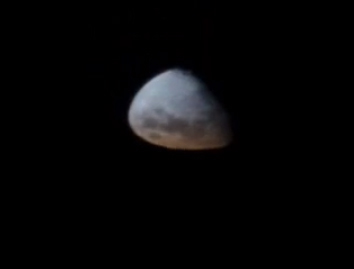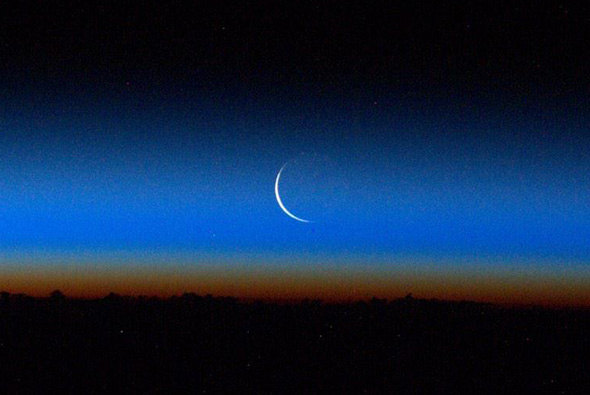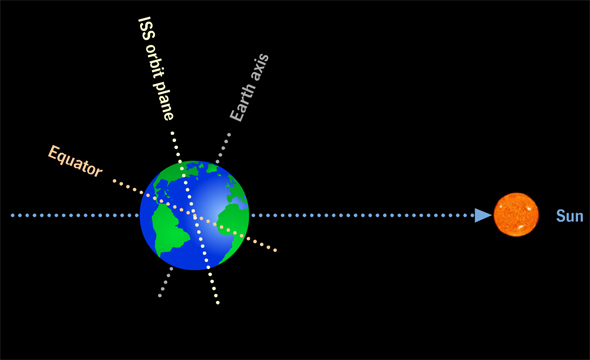Watch the Moon Get Squashed From Orbit
Sometimes what you see depends on where you are. And when you look around from orbit, things can look really, really strange.
Don’t believe me? Then watch this Vine video posted by ISS astronaut Terry Virts, an animation showing the Moon setting as seen from space:
See what I mean? The caption says,
#moonset during high-beta a while back. It gets squished, turns red, and disappears- pretty cool.
There’s a lot packed into those few words. First, when the Moon sets as seen from the space station, it’s more a reflection of the space station’s movement around the Earth than the Moon’s. For us on the ground, the Moon sets once per day, but from the station it sets 16 times per day! The Moon appears to move around the sky faster, and it moves through its own diameter in just under eight seconds. From the ground that takes closer to two minutes. The video is sped up, but not as much as you might think.

Photo by NASA
Why does it get squished? That’s an atmospheric effect. The air acts like a lens, bending the light from the Moon; as the Moon sets, the bottom is seen through thicker air, which bends the light more. In effect, the bottom of the Moon looks like it sets slower than the top, so the Moon gets squished.
The redness is due to another atmospheric effect: scattering. Light from the Moon comes in from space and encounters our air. Photons, particles of light, hit the molecules of nitrogen and oxygen and scatter, a bit like two pool balls hitting each other. Blue light is way more sensitive to this than red. When the Moon is on the horizon, we’re looking through a lot more air, so there’s a lot more scattering. The blue light gets sent off in random directions, away from our eyes, while the red light gets through, making the Moon look red. It’s more complicated than this (haze, pollution, smoke, and other factors can amplify the effect), but that’s the gist of it.
You can see this photos, too: Appropriately enough, here’s one Virts posted right after the moonset video:
Finally, what’s all this about the “high-beta a”? In this case, for Twitter, Virts was being brief: He means the beta angle, which has to do with the orientation of the space station as it orbits the Earth. Here’s a diagram via NASA:
The angle between the space station’s orbital tilt and the direction to the Sun is the beta angle. In this drawing, the tilt is such that the station is nearly face-on to the Sun. That’s a high angle. If it were more edge-on to the Sun (as it would be three months later, when the Earth has moved around its orbit ¼ of the way) then it would be low beta angle.
This affects the orientation of the Moon. This gets complicated pretty quickly, but in general, if his video were taken during low beta angle, the Moon would have looked more like it was facing into its own movement, in this case moving more right-to-left (or maybe left-to-right, depending on orbital angles). At high beta angle, the movement is closer to perpendicular to that.
Another way to look at it: See that line dividing night and day on the Moon? That’s called the terminator. Speaking very roughly, seen from Earth the Moon tends to move across the sky in a direction perpendicular to that line. But because the space station was at high beta angle, the Moon’s movement is nearly parallel with it.
I know, this can be headache inducing. I had to draw myself some diagrams to make sure I understood this myself. The details get pretty maddening, like the Moon’s orbital tilt with respect to the Sun, the season, the latitude of the observer, and more. That’s why I’m saying my descriptions are very general! To make them specific would take a lot of words. A lot.
Anyway, the point is, there are more things in heaven and Earth than are dreamt of in your philosophy … unless you understand the physics. And play the angles.



